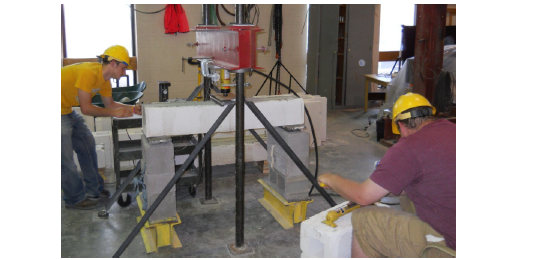1 Architectural Engineering Student, Department of Civil /Architectural Engineering, University of Wyoming, Laramie, WY, 82070, United States, nstroud1@uwyo.edu
2 Associate Professor, Department of Civil/Architectural Engineering, University of Wyoming, Laramie, WY, 82070, United States, TannerJ@uwyo.edu
ABSTRACT
Autoclaved Aerated Concrete (AAC) is a lightweight, cellular, precast building material capable of providing structural, thermal and fire resistance. Design provisions for AAC masonry were introduced in the 2005 masonry design code (MSJC), but these design provisions do not reference experimental testing of grouted, reinforced AAC lintels.
The hypothesis is that lightly reinforced and grouted AAC lintels, designed according to current masonry design provisions (MSJC), will be conservative. A suite of 12 lintels were tested to confirm this hypothesis. There were ten beams (lintels) to validate flexural behavior and two to validate shear behavior. Companion material tests were conducted on the AAC, grout, thin-bed mortar, and reinforcing bars to provide accurate values for evaluating the theoretical strength. Results of observed-to-calculated capacity showed that the average beam strength was 30% better than that predicted using MSJC design provisions. All data verified that AAC lintels can indeed behave in a ductile manner.
KEYWORDS: autoclaved aerated concrete, AAC, grouted lintel, beam
509.pdf



